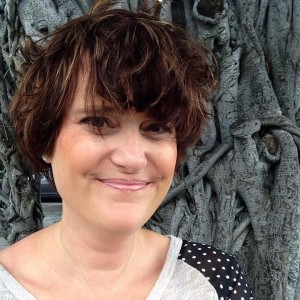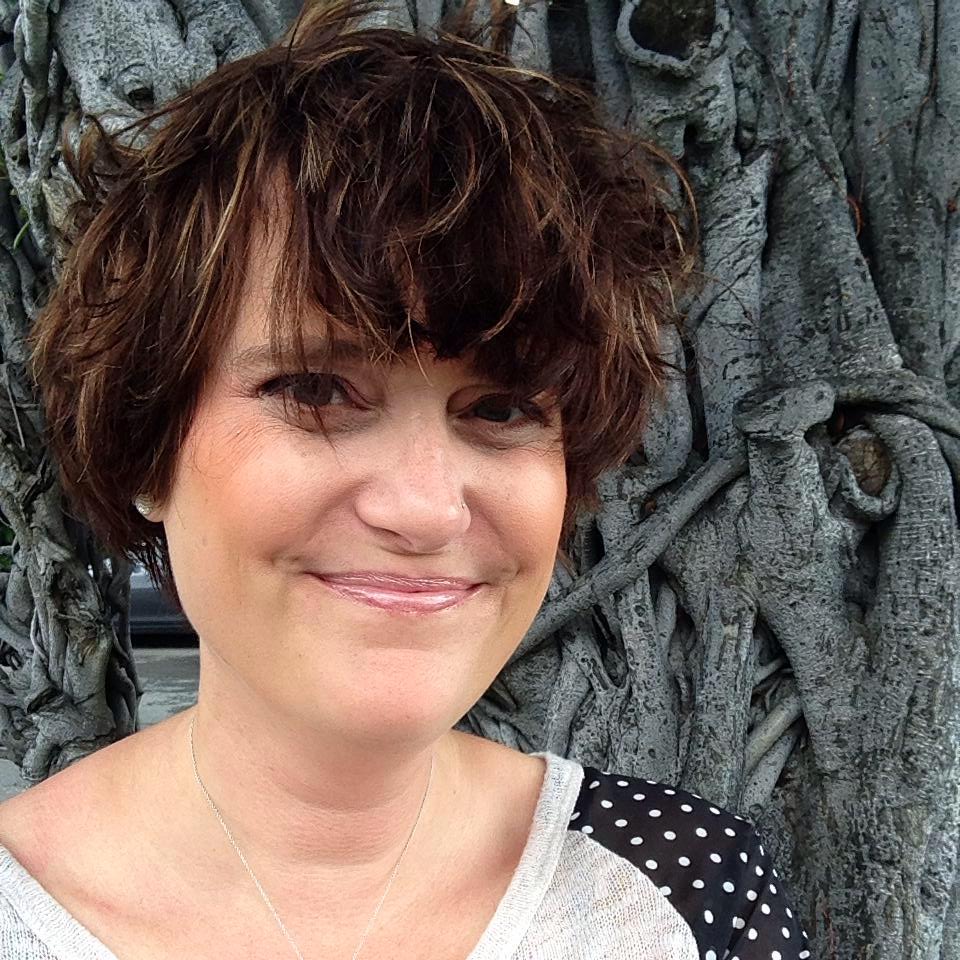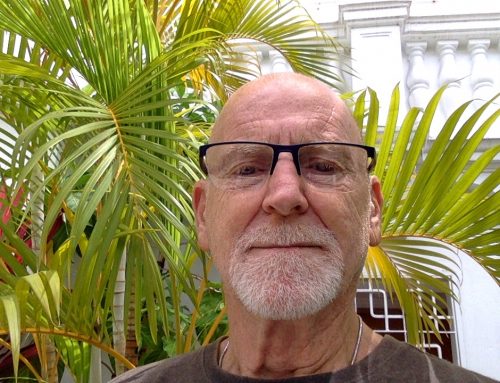Looking back on my behavior over the past forty years, I can pinpoint certain events that I realize now, were not of normal behavior. Being ultra-sensitive to television shows (crying over an American Express commercial), finding myself completely destroyed and depressed when it came to rejection, feelings of complete desperation of trying to hold onto hope, and huge amounts of energy coming up with creative projects.
I have Cyclothymia Disorder, and this is my story…
I think the first time I should have noticed the (or at least my parents should have noticed it) red flag was back in fourth grade. I remember being at a birthday party, and sitting in a corner by myself, which I often did when it came to when slumber parties were involved, not really talking to anyone. I felt anxious, and out of place. While I tried really hard to have friends over the years, I would often find myself the odd-girl out. As with any slumber party, there was always drama that followed it. I don’t remember what actually happened, but all of the sudden I was in the middle of a huge cry fest with about ten other eight year-old girls. Surprise. My anxiety was high, and I didn’t know what to make of what was happening around me. When the mom of the birthday girl walked into the room to find out what was wrong with these crazy ten girls crying in the middle of the night, I totally froze up and started balling uncontrollably. My friend’s mom looked at me and said, “Anaiyah, what is wrong with you?” Again freezing up and not knowing what to say, I came up with a lie, “Goose is dead!” Ummmm.yes! That’s right, it was 1986, and we were eleven years old because I remember using Top Gun as an excuse to rationalize my irrational behavior at that party. If I remember correctly, we didn’t even watch Top Gun that night. It was just an excuse that I pulled out of my ass, because…Goose. There was nothing sadder in 1986 then having to grieve over Gooses’ death scene.
After several hundred Goose moments over the years, I finally started seeing a therapist at forty years old. I could no longer hide it; I was suffering, and needed clear perspective. Luckily, I found a fantastic therapist almost immediately. Originally, she was treating me for anxiety disorder. I refused to take medication, and tried holistically to heal myself. I was getting worse though, and not better. Finally, one day on my way to see my therapist, I felt extremely agitated, nervous, jumpy, and extremely hyper, I couldn’t slow down my thoughts, or how fast I spoke. When I first walked in her office she could tell something was different about me. I asked her why I was feeling so out of control. That’s the moment when I got my diagnosis, “Cyclothymia”. It was pretty easy to diagnosis after seeing me that day, and a few weeks later my psychiatrist also confirmed my diagnosis. But what is Cyclothymia? I’ve used that word a few times, and I still don’t have any clear explanation what that is. Let me start by saying that it is a very rare mood-disorder (not because I’m special, but because most people are misdiagnosed with Bi-Polar II or Borderline Personality Disorder), and is part of the Bi-Polar family. What really makes it different than Bi-Polar II is that the extremes fluctuating between highs and lows aren’t as turbulant as full as Bi-Polar. At the same time, it really sucks because with Bi-Polar your moods fluctuate every few weeks, or months; while Cyclothymia mood swings can last a few hours to four/five days. It’s like we are constantly fighting to find balance in the midst of a storm. But at least the waves are five to six footers, instead of twenty to forty footers.
And that’s the bitch with Cyclothymia Disorder. One minute you’re fine, the next you’re crying at a slumber party using Goose as an excuse to rationalize your strange behavior.
When I first got my diagnosis I can’t say that I was in denial, or that I was relieved. I guess you could say that I was somewhere in-between. Instead of focusing on my own issues, I went into hypomania mode and started a photography project called Brave Face Forward. Brave Face Forward is a photography project where I take people’s photographs, their diagnosis, and their story on why they want to help advocate for mental health, and post it on social media. This was to give myself a distraction, giving me the opportunity to help others with their diagnosis but masking mine. I’m really good at avoiding my problems. About two weeks into my diagnosis, I finally had the realization that I had a mental illness. I called my girlfriend, crying of course, and telling her how crazy I felt. She said to me some of the most poignant words you could ever hear, “Anaiyah,” she started, “You jumped right into this project, along with all of your other projects without really giving yourself the time to process your diagnosis. You really might consider taking a step back, and start self-caring for yourself”. As I sat at the mall on a bench, crying my eyes out, once she said those magic words to me, I knew that I was going to be okay. I had support around me from my friends, who knew me well enough to tell me what I needed to hear. That was that other people could take care of themselves for now, but Anaiyah needed love and needed to be cared for at that time.
Over the next couple of months, that’s exactly what I did. I stopped my photography project to start focusing in on myself. I started reading self-help books, and started meditating more. I finally started seeing a psychiatrist, and was put on medication. I continued with my weekly therapy appointments, and gave myself permission to take a day off for mental health when I needed it. It wasn’t too much longer before I decided to go back to work. I started part time, just three days a week, and slowly built myself up to be a full time employee. I started running again, this time for my photography project. I started a self-doubt swear jar. Every time I caught myself saying something negative about myself, I had to put a dollar in. Eventually, that will turn into a self-love jar where I can start taking money out. I did little things that made me feel like I was normal, even though I knew that I wasn’t.
One of the bitches about Cyclothymia is that our brains run so fast, and process so quickly that it’s hard for it to slow down. Which means that I’m not even sure that this essay makes any sense. Does it? I hope so. I guess I’m just trying to sort out for you what Cyclothymia is, and how not to use a sad movie as an excuse to why you’re crying. Yeah, that one is pathetic. I hope that my rambling makes sense to the large masses that are tuned in. Medication helps for sure for treatment. The biggest complaint that I have about my medication is that I can’t drink while I’m on it. Okay, that’s sort of a lie, I can drink while I’m on it, but only one glass of wine as opposed to several. Too bad that I can’t binge drink and puke outside the bar anymore. Oh yes, that happened several times throughout my span of a professional binge drinker. Turns out that I was self medicating myself all of those years, to mask my anxiety, and to slow down my thoughts (or speed them up and have me go at 150% as opposed to 100%). Everyone loves a funny drunk, so my friends would love to take me out karaoke, or dancing, or just to have over to their house. As long as there was booze and cigarettes, I was down for a night of a crazy party.
Actually, thinking about that now makes me wonder how insane I must have acted all of those nights in college going to parties, and drinking a pony keg of Honey Brown with four other guys over the course of a weekend. I could drink almost anyone under the table, and sadly I prided myself on it. Which is totally wrong of me considering that my parents were also binge drinkers. We really were an enabling family. If I ever wanted beer or cigarettes, I just had to ask my parents. I did the same for them as I got older and to the legal age to purchase those items.
The point is this: never let someone with a Bi-Polar disorder write an essay that is convoluted. And never ever use a movie to hide your anxiety disorder.
 Anaiyah Lovely is the founder of the photography project Brave Face Forward. She is an author, blogger, photographer, life coach, and mental health advocate. When she’s not busy writing, or photographing, you can find her teaching tarot and tea leaf reading classes.
Anaiyah Lovely is the founder of the photography project Brave Face Forward. She is an author, blogger, photographer, life coach, and mental health advocate. When she’s not busy writing, or photographing, you can find her teaching tarot and tea leaf reading classes.
Anaiyah Lovely can be found on her blog, photography site, and Twitter.








I actually did read through the entire thing. Cyclothymia – never even heard of it, very interesting. Many people don’t know they are self medicating. Also everyone does stupid things when they are young, so lol.